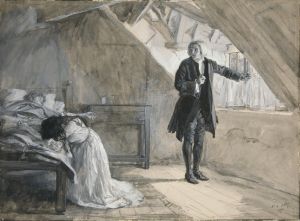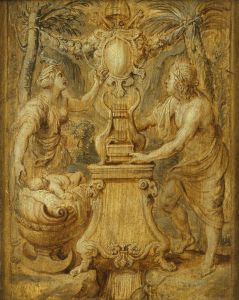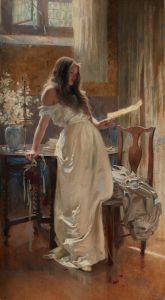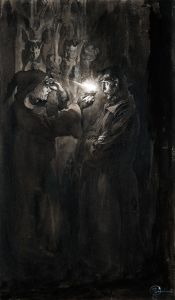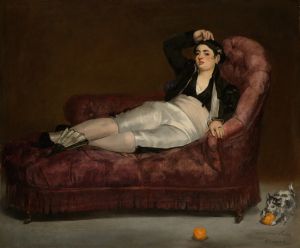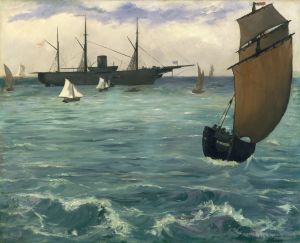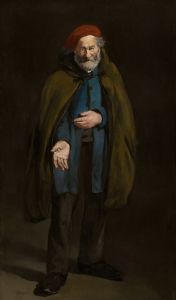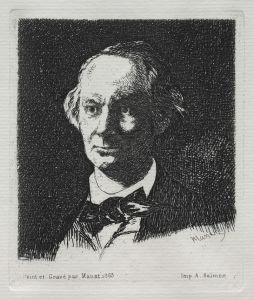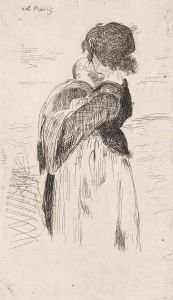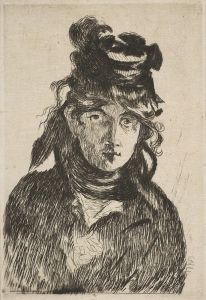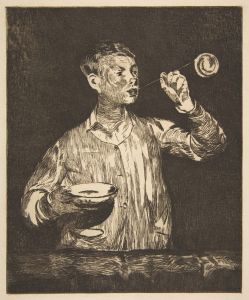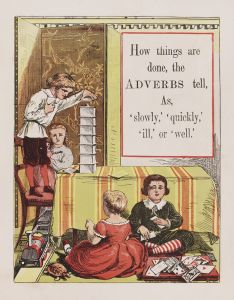
Open Here I Flung the Shutter. Illustration to The Raven by Edgar Allan Poe
A hand-painted replica of Édouard Manet’s masterpiece Open Here I Flung the Shutter. Illustration to The Raven by Edgar Allan Poe, meticulously crafted by professional artists to capture the true essence of the original. Each piece is created with museum-quality canvas and rare mineral pigments, carefully painted by experienced artists with delicate brushstrokes and rich, layered colors to perfectly recreate the texture of the original artwork. Unlike machine-printed reproductions, this hand-painted version brings the painting to life, infused with the artist’s emotions and skill in every stroke. Whether for personal collection or home decoration, it instantly elevates the artistic atmosphere of any space.
"Open Here I Flung the Shutter. Illustration to The Raven by Edgar Allan Poe" is an artwork created by the renowned French painter Édouard Manet. This piece is part of a series of illustrations that Manet produced for Stéphane Mallarmé's French translation of Edgar Allan Poe's famous poem "The Raven." The illustrations were published in 1875, a period when Manet was already an established figure in the art world, known for his pivotal role in the transition from Realism to Impressionism.
Manet's illustration captures a dramatic moment from Poe's poem, which tells the story of a grieving man visited by a mysterious raven. The specific scene depicted in "Open Here I Flung the Shutter" shows the protagonist opening a window to confront the source of a mysterious tapping sound, only to find the raven entering his chamber. Manet's interpretation of this scene is marked by his characteristic use of bold lines and stark contrasts, which effectively convey the tension and eerie atmosphere of the poem.
The collaboration between Manet and Mallarmé was significant, as it brought together two leading figures of the French artistic and literary avant-garde. Mallarmé's translation of "The Raven" was highly regarded for its fidelity to Poe's original text and its poetic quality, while Manet's illustrations were praised for their ability to visually capture the haunting mood of the poem. This project exemplifies the close relationship between visual art and literature in the 19th century, highlighting the interdisciplinary nature of artistic expression during this period.
Manet's illustrations for "The Raven" are notable for their departure from the more literal and detailed style of earlier book illustrations. Instead, Manet employed a more impressionistic approach, using loose brushwork and a limited color palette to evoke the psychological depth and emotional intensity of Poe's narrative. This technique aligns with Manet's broader artistic practice, which often emphasized the subjective experience of the viewer over precise representation.
The series of illustrations, including "Open Here I Flung the Shutter," were created using lithography, a printmaking process that allowed for the production of multiple copies. This method was well-suited to Manet's dynamic and expressive style, enabling him to experiment with different textures and effects. The lithographs were printed on high-quality paper, enhancing their visual impact and ensuring their durability.
Today, Manet's illustrations for "The Raven" are considered important works within his oeuvre, reflecting his interest in literary themes and his innovative approach to illustration. They also serve as a testament to the enduring influence of Edgar Allan Poe's work on artists and writers across different cultures and time periods. Manet's ability to translate the dark, melancholic tone of Poe's poem into visual form demonstrates his skill as an illustrator and his deep understanding of the interplay between text and image.
In summary, "Open Here I Flung the Shutter. Illustration to The Raven by Edgar Allan Poe" by Édouard Manet is a significant example of 19th-century book illustration, showcasing the artist's unique style and his collaboration with the poet Stéphane Mallarmé. The work remains an important piece of art history, illustrating the rich connections between visual art and literature during this era.





